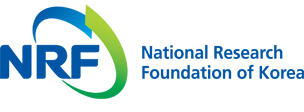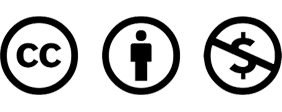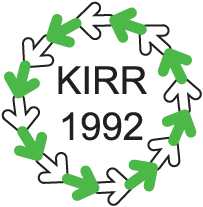-
Article Review
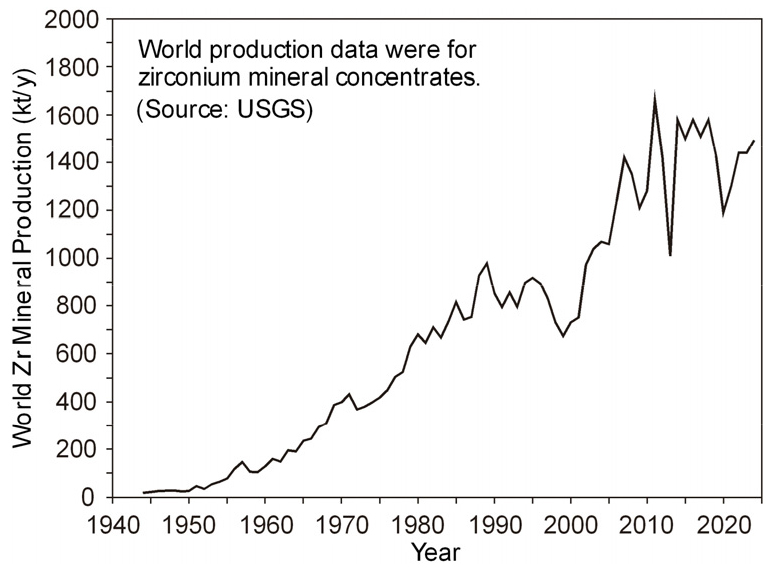
-
Smelting and Recycling of Zirconium
지르코늄의 제련과 리사이클링
-
Ho-Sang Sohn
손호상
- Zirconium (Zr) is a critical metal that is essential for advanced industries such as nuclear power, and is only produced in France, …
지르코늄(Zr)은 원자력 등 첨단산업에 필수적인 핵심금속이며, 프랑스, 미국, 러시아, 중국, 인도에서만 생산하고 있다. 본 논문에서는 이러한 Zr의 생산량, 용도, 제련 및 리사이클링 …
- Zirconium (Zr) is a critical metal that is essential for advanced industries such as nuclear power, and is only produced in France, the United States, Russia, China, and India. This study reviews the technologies associated with zirconium production, utilization, smelting, and recycling. Global annual zirconium production is only around 6,000 tonnes, over 80 % of which is used for nuclear power. Zirconium smelting methods are classified according to zircon decomposition and hafnium separation. The Kroll process is used in industrial zirconium production to reduce zirconium chloride (ZrCl4) using magnesium; however, new smelting methods such as molten salt electrolysis and metalothermic reduction are also being investigated. Scrap generated during the processing of zircaloy, which is used in nuclear power plants, can be used as an additive in alloys such as copper and aluminum. A single alloy in zirconium scrap does not require composition control and can be easily recycled by melting it down after simple cleaning. However, scrap from dissimilar alloys requires additional processing for recycling. Zirconium alloys used in nuclear power plants are classified as radioactive waste and cannot be recycled. Further research is needed to recover zirconium from these radioactive wastes.
- COLLAPSE
지르코늄(Zr)은 원자력 등 첨단산업에 필수적인 핵심금속이며, 프랑스, 미국, 러시아, 중국, 인도에서만 생산하고 있다. 본 논문에서는 이러한 Zr의 생산량, 용도, 제련 및 리사이클링 기술에 관하여 고찰하였다. Zr의 전 세계 연간 생산량은 약 6,000 톤에 불과하며, 약 80 % 이상은 원자력용으로 사용되고 있다. Zr 제련법은 지르콘의 분해와 Hf 분리하는 방법에 따라 구분한다. 공업적인 Zr 제조는 ZrCl4를 Mg으로 환원하는 Kroll법을 사용하고 있지만, 용융염 전해법과 금속 열환원법 등의 신제련법도 연구되고 있다. 원자력용으로 사용되는 zircaloy 등의 가공 공정 중 발생하는 스크랩은 Cu, Al 등의 모합금용 첨가제로 이용되고 있다. 단일 합금인 Zr 스크랩은 조성 제어할 필요가 없어 간단한 세정 후 용해하면 쉽게 리사이클링할 수 있다. 그러나 이종 합금 스크랩은 리사이클링을 위해 별도의 처리가 필요하다. 원자력용으로 사용된 Zr 합금은 방사성 폐기물로 분류되어 있으므로 리사이클링 대상이 되지 못하고 있지만, 향후 이러한 방사성 폐기물에서 Zr을 회수하기 위한 연구가 필요하다.
-
Smelting and Recycling of Zirconium
-
Article Review
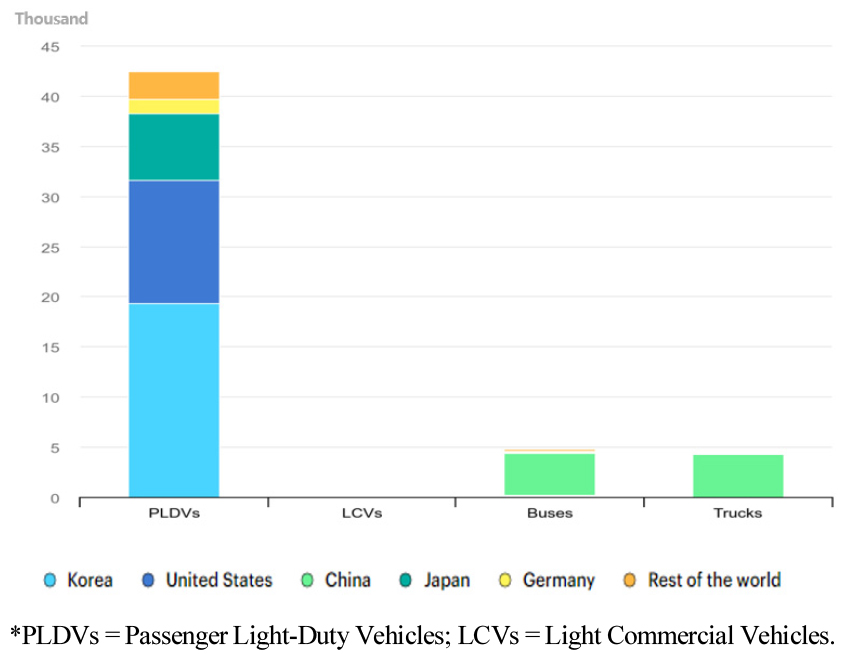
-
Research Trends in Pyrometallurgical Recycling Processes for Spent Fuel Cell Catalysts
건식제련 기술을 활용한 사용 후 연료전지 촉매 재활용 연구동향
-
Seungyun Han, Eunmi Park, Young-Min Kim, Insung Hwang, Yong Hwan Kim
한승연, 박은미, 김영민, 황인성, 김용환
- The increasing urgency of global warming and rising carbon emissions has accelerated the demand for sustainable energy technologies. Among these, fuel cells …
지구 온난화와 탄소 배출량 증가로 인해 친환경적인 에너지원에 대한 수요가 빠르게 증가하고 있다. 이 중에서도 연료전지는 높은 에너지 효율과 환경친화적인 특성으로 주목받고 …
- The increasing urgency of global warming and rising carbon emissions has accelerated the demand for sustainable energy technologies. Among these, fuel cells are recognized for their superior energy efficiency and minimal environmental footprint. However, the limited availability and high cost of critical materials, particularly platinum group metals (PGMs) and other valuable metals used in catalysts, present significant challenges, emphasizing the necessity of efficient recycling strategies to address resource scarcity and environmental concerns. Pyrometallurgical processes, characterized by high-temperature operations, have demonstrated effectiveness in impurity removal and high-purity metal recovery. These methods offer distinct advantages, including the elimination of chemical solvents, thus mitigating secondary environmental pollution. This study examines the latest advancements in catalyst recovery processes, a critical component of fuel cells, through pyrometallurgical techniques. Furthermore, the economic implications of these methods are evaluated, highlighting their cost-effectiveness relative to conventional recycling approaches. Finally, this paper explores the broader role of recycling technologies in optimizing resource utilization and advancing the sustainability of energy systems.
- COLLAPSE
지구 온난화와 탄소 배출량 증가로 인해 친환경적인 에너지원에 대한 수요가 빠르게 증가하고 있다. 이 중에서도 연료전지는 높은 에너지 효율과 환경친화적인 특성으로 주목받고 있다. 그러나 연료전지에 사용되는 소재는 한정적이며, 특히 촉매로 사용되는 백금족 금속(Platinum Group Metals, PGMs) 및 유가금속과 같은 고가의 자원은 자원 고갈과 경제적 부담을 초래할 가능성이 크다. 이에 따라 연료전지 재활용 기술은 자원 소비를 줄이고 환경적 영향을 최소화하기 위한 중요한 해결책으로 떠오르고 있다. 건식제련 공정은 고온에서 불순물을 효과적으로 제거하여 고순도의 금속을 회수하는 기술로서, 화학 용매 사용이 불필요하다는 점에서 환경 오염을 최소화할 수 있는 장점이 있다. 본 논문에서는 연료전지의 주요 구성 요소 중 하나인 촉매의 회수 공정에 초점을 맞추어, 건식제련공정을 활용한 효율적인 재활용 방안의 연구동향을 조사하였다. 또한, 해당 공정의 경제적 이점과 기존 공정 대비 비용 절감 효과와 이를 통해 본 논문에서 소개한 재활용 기술이 자원 절약 및 지속 가능한 에너지 시스템 구축에 미치는 기여 가능성에 대하여 논의하였다.
-
Research Trends in Pyrometallurgical Recycling Processes for Spent Fuel Cell Catalysts
-
Article Review
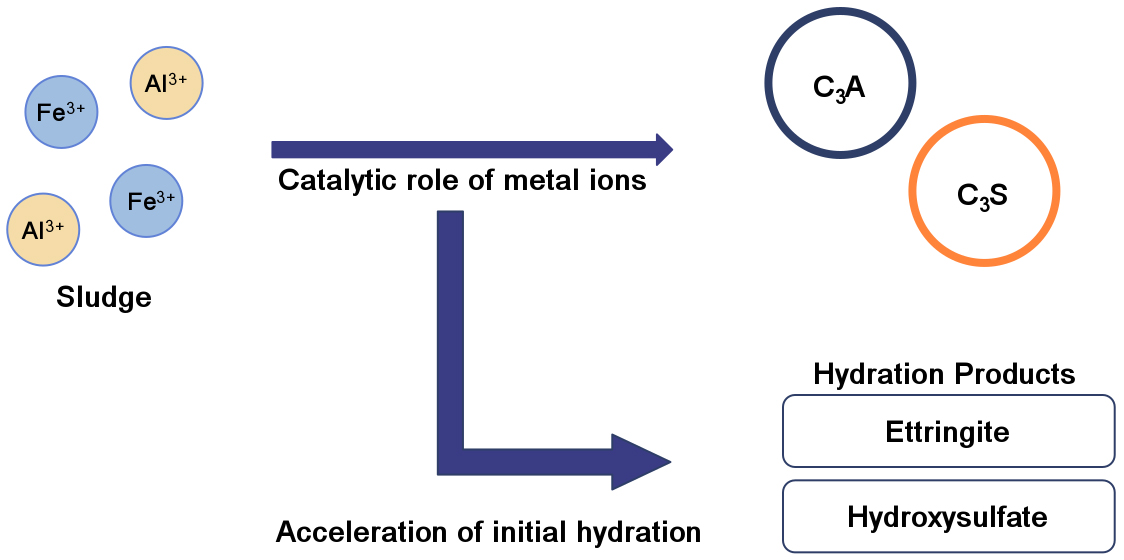
-
Technology for Cement Accelerator Utilization Based on Fe-Al Sludge from Waste Battery Recycling
폐배터리 재활용에서 발생한 Fe-Al 슬러지 기반 시멘트 급결제 활용을 위한 기술
-
Insung Hwang, Young-Min Kim, Yong Hwan Kim, Seungyun Han
황인성, 김영민, 김용환, 한승연
- Fe–Al sludge generated during waste battery recycling processes is a metal-rich industrial by-product that has recently drawn attention as a promising material …
폐배터리 재활용 공정에서 발생하는 Fe–Al계 슬러지는 고농도의 금속 성분을 함유한 산업 부산물로, 자원순환 촉진 및 기능성 건설 소재화 측면에서 활용 가능성이 높은 …
- Fe–Al sludge generated during waste battery recycling processes is a metal-rich industrial by-product that has recently drawn attention as a promising material for resource circulation and functional construction applications. This review paper comprehensively summarizes recent research trends on the development of fundamental technologies and the practical applicability of utilizing Fe–Al sludge as a cement accelerator. The analysis revealed that Fe–Al composite sludge promotes the formation of ettringite and hydroxysulfate-type hydration products through interactions between metal ions, effectively contributing to the reduction of setting time and the early development of strength in cement paste. Compared to conventional chloride-based accelerators, it offers advantages in terms of durability and environmental stability, and is expected to serve as a strategic turning point that enhances both the eco-friendliness and economic feasibility of the construction materials industry.
- COLLAPSE
폐배터리 재활용 공정에서 발생하는 Fe–Al계 슬러지는 고농도의 금속 성분을 함유한 산업 부산물로, 자원순환 촉진 및 기능성 건설 소재화 측면에서 활용 가능성이 높은 소재로 주목받고 있다. 본 논문은 이러한 Fe–Al계 슬러지를 시멘트 급결제로 활용하기 위한 기초기술 개발 동향과 응용 가능성에 관한 최신 연구를 종합적으로 분석하였다. 분석결과, Fe–Al 복합계 슬러지는 금속 이온 간 상호작용을 통해 Ettringite 및 hydroxysulfate 계열 수화 생성물 형성을 촉진하며, 시멘트 페이스트의 응결 시간 단축과 조기 강도 발현에 효과적으로 기여하는 것으로 나타났다. 이는 기존 염소계 급결제에 비해 내구성 및 환경 안정성 측면에서 유리하며, 건설 소재 산업의 환경친화성과 경제성을 동시에 강화할 수 있는 전략적 전환점을 제공할 수 있을 것으로 기대된다.
-
Technology for Cement Accelerator Utilization Based on Fe-Al Sludge from Waste Battery Recycling
-
Research Paper
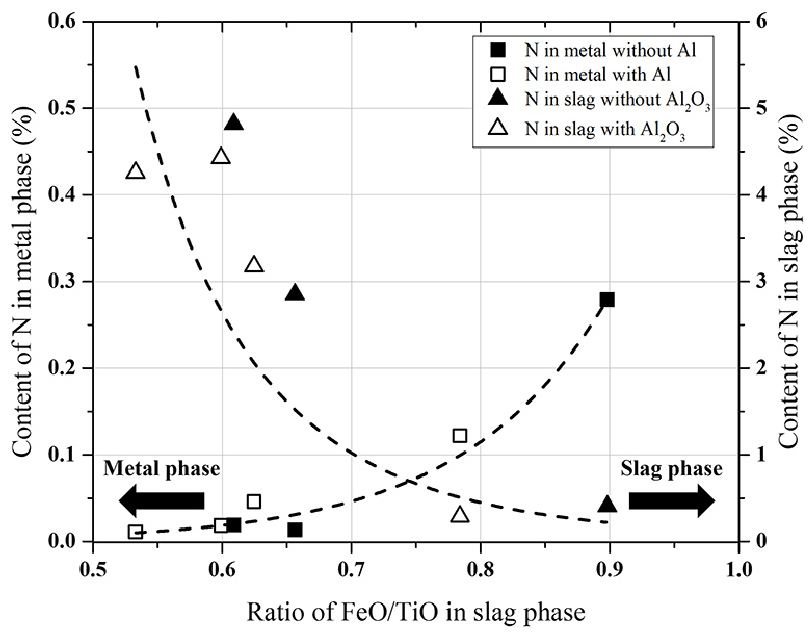
-
Influence of FeO-TiO-MgO-Al2O3 Slag on Reducing Ti Loss and Removing Impurities in Fe-Ti Alloys Production Using Ti Turning Scrap
Ti Turning Scrap 활용 Fe-Ti 합금 제조시 합금 내 Ti 손실 저감 및 불순물 제거에 미치는 FeO-TiO-MgO-Al2O3 슬래그의 영향
-
Yong-Woo Kim, Sun-Joong Kim
김용우, 김선중
- A large amount of scrap of Ti turnings is generated from manufacturing processes of sponge and product. One method of recycling of …
Ti 터닝 스크랩은 스펀지 제조 공정, 가공용 소재 제조 공정, 제품 제조 공정 등 다량으로 발생하고 있으며, 이러한 스크랩의 재활용 공정 중 …
- A large amount of scrap of Ti turnings is generated from manufacturing processes of sponge and product. One method of recycling of Ti scrap is through the production of ferrotitanium alloys. However, during the production of ferrotitanium alloys, impurities in Ti scrap can lead to an increase in the overall impurities and a loss of Ti from the Fe-Ti alloy. In the present study, the influence of the slag composition on reducing the loss of Ti and the removal of impurities from Fe-Ti alloys was investigated by evaluating the equilibrium between the FeO-TiO2-MgO-Al2O3 multi-component slag and an Fe-Ti melt with a titanium content of over 60 wt% at 1873 K under Ar atmosphere. The Ti content in the Fe-Ti alloy was adjusted by charging with scrap of Ti turnings from industry. When the Fe-Ti alloy was melted with the addition of Al scrap, Ti loss from the Fe-Ti alloy decreased owing to the preferential oxidation of Al over Ti in the Fe-Ti melts and the reduction in the activity coefficient of TiO for the slag containing Al2O3. On the other hand, regardless of Al addition, the contents of N and C in the Fe-Ti alloy decreased
- COLLAPSE
Ti 터닝 스크랩은 스펀지 제조 공정, 가공용 소재 제조 공정, 제품 제조 공정 등 다량으로 발생하고 있으며, 이러한 스크랩의 재활용 공정 중 하나는 Fe-Ti 합금 제조이다. 그러나 Fe-Ti 합금 제조 시 Ti 스크랩의 불순물로 인한 합금내 불순물 증가 및 합금 내 Ti 손실 등의 문제가 발생할 수 있다. 본 연구에서는 1873K 및 Ar 분위기에서 FeO-TiO2-MgO-Al2O3 다원계 슬래그와 Ti 함량 60wt% 이상의 Fe-Ti 합금의 평형 반응을 통해 합금 내 Ti 손실을 줄이며 불순물인 N과 C 제거에 대한 슬래그 조성의 영향을 조사하였다. Fe-Ti 합금의 Ti 농도는 Ti 터닝 스크랩을 장입하여 제어하였다. 또한, 합금 제조시 Al을 추가 장입하여 Ti보다 우선 산화를 통해 생성된 Al2O3가 슬래그에 함유되는 조건에서 슬래그내 γTiO 증가하고 합금 내 Ti 손실 감소를 확인하였다. 한편, Al 추가 장입과 관계없이 Fe-Ti 합금내 불순물인 N는 슬래그의 FeO/TiOx비가 감소할수록 약 0.02wt% 이하로 감소하며, C는 0.1wt% 이하로 감소하는 것을 확인하였다. Fe-Ti 합금내 생성된 평형 산화물은 TiO 상으로 확인되었다. Fe-Ti 합금 내 Ti 손실을 줄이기 위해서는 Ti보다 우선 산화 반응이 일어나는 첨가물이 필요하다고 판단된다.
-
Influence of FeO-TiO-MgO-Al2O3 Slag on Reducing Ti Loss and Removing Impurities in Fe-Ti Alloys Production Using Ti Turning Scrap
-
Research Paper
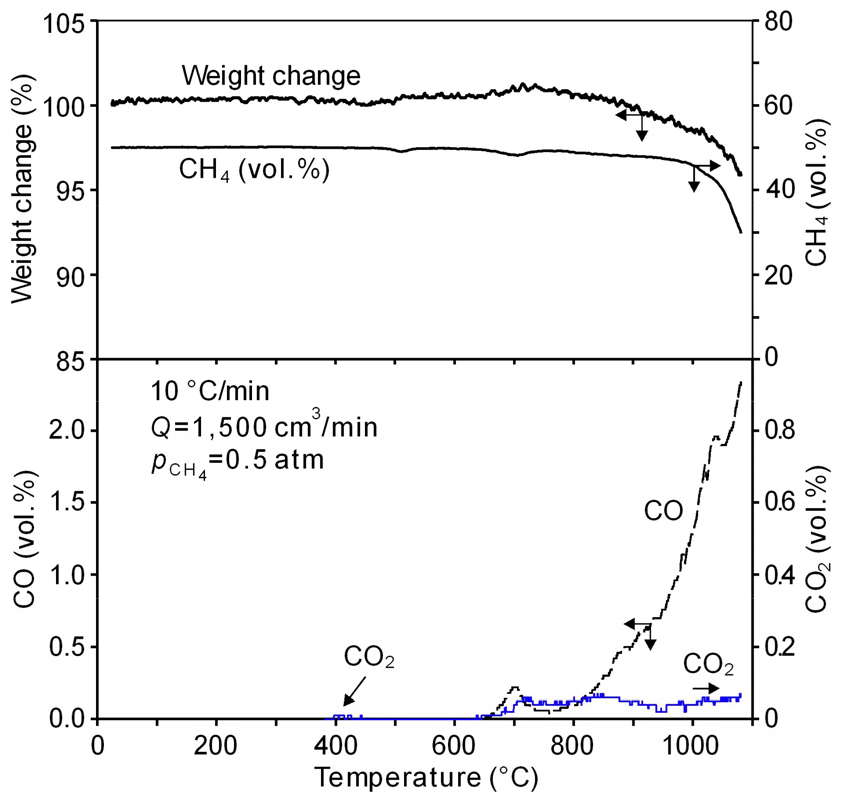
-
Reduction Roasting of Cathode Materials of NCM Based Lithium-ion Batteries Using CH4(g)
NCM계 리튬이온 배터리 양극재의 CH4(g)에 의한 환원 배소
-
Jae-Ho Hwang, Sang-Yeop Lee, Ho-Sang Sohn
황재호, 이상엽, 손호상
- This study investigated the effect of temperature on the reduction roasting of NCM(LiNixCoyMn1-x-yO2)-based cathode …
본 연구에서는 폐리튬이온배터리에서 유가금속 회수를 위해 CH4(g)에 의한 NCM(LiNixCoyMn1-x-yO2)계 양극재의 환원 배소에 …
- This study investigated the effect of temperature on the reduction roasting of NCM(LiNixCoyMn1-x-yO2)-based cathode materials using methane(CH4) to recover valuable metals from the spent lithium-ion batteries. Thermogravimetric analysis was conducted on NCM-based cathode materials in an Ar+50 vol.%CH4(g) atmosphere ranging from room temperature to 1,100 °C. The sample weight was decreased from 750 °C, with the rapid generation of CO(g) at this temperature. In isothermal roasting, the final weight loss rate increased with increasing temperature. CO2(g) was emitted before the CH4(g) supply. CO(g) was emitted sharply at the same time as the CH4(g) supply and reached a peak value, then decreased to a constant value with weight loss. The reduction of NiO was promoted with the increase of the roasting temperature. At temperature above 910 ℃, only Ni was present. This indicates that most of the oxides had been reduced to metals. The Li recovery rate increased with the roasting temperature increased. The Li compounds recovered from the leachate were identified as Li2CO3, LiOH and LiOH·H2O. Therefore, it is thought that hydrogen reduction by the decomposition of CH4(g) also occurred. It is also thought that Li compounds and metals such as Ni and Co can be separated and recovered by reduction roasting the NCM powder using CH4(g) at temperatures above 900 ℃, followed by water leaching.
- COLLAPSE
본 연구에서는 폐리튬이온배터리에서 유가금속 회수를 위해 CH4(g)에 의한 NCM(LiNixCoyMn1-x-yO2)계 양극재의 환원 배소에 미치는 온도의 영향에 관하여 조사하였다. NCM계 양극재 시료를 Ar+50 vol.%CH4(g) 분위기에서 1,100 ℃까지 열중량 분석한 결과 약 750 ℃부터 시료의 무게가 감소하는 경향을 나타내었으며, 이때 CO(g)가 급격하게 발생하였다. 등온 배소에서는 온도가 높을수록 최종 무게 감소율이 증가하였으며, CO2(g)는 CH4(g) 공급 전에 발생하였다. 배가스 중 CO(g)는 CH4(g) 공급과 동시에 급격하게 발생하여 최곳값을 보인 후 감소하여 무게 감소와 함께 일정한 값을 나타낸 후 다시 감소하였다. 배소 온도 상승과 함께 NiO의 환원이 촉진되고, 910 ℃ 이상에서는 Ni만 관찰되어 대부분의 산화물이 환원되었다. 배소 온도의 상승과 함께 Li 회수율이 증가하였으며, 침출 여액에서 회수한 Li 화합물은 Li2CO3, LiOH, LiOH·H2O로 검출되었다. 따라서 CH4(g)의 분해에 의해 수소에 의한 환원도 일어난 것으로 생각되며, NCM 분말을 약 900 ℃ 이상에서 CH4(g)로 환원 배소한 후 수침출하면 Li 화합물과 Ni, Co 등의 금속을 분리·회수할 수 있는 것으로 생각된다.
-
Reduction Roasting of Cathode Materials of NCM Based Lithium-ion Batteries Using CH4(g)
-
Research Paper
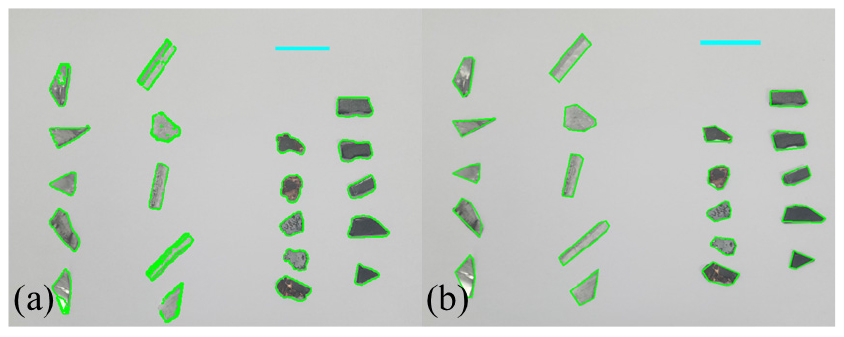
-
A Study on the Separation Efficiency Analysis of Waste Battery Scraps Based on Deep Learning Image Recognition
딥러닝 기반 영상인식을 활용한 배터리 파쇄물의 선별률 분석 연구
-
Kyeonghyeon Lee, Hansol Lee, Hoon Lee
이경현, 이한솔, 이훈
- In this study, an image recognition-based analysis method was applied to by-products generated from the battery crushing process, aiming to improve the …
본 연구에서는 배터리 파쇄 공정 산물에 대해 영상 인식 기반 분석 기법을 적용하여, 복합 폐기물의 재활용 효율 향상을 도모하고자 하였다. YOLOv8을 기반으로 …
- In this study, an image recognition-based analysis method was applied to by-products generated from the battery crushing process, aiming to improve the recycling efficiency of complex waste streams. A deep learning model for material classification was developed based on YOLOv8, and particle areas were quantified using Canny edge-based contour detection along with baseline calibration techniques. Approximately 7,000 images were utilized for training, and data augmentation and correction algorithms enabled the model to achieve a high object detection accuracy with an mAP of 0.971. Based on the quantified particle area and the calibrated mass per unit area (g/mm2), the mass of each particle was estimated. These values were used to calculate recovery and grade, and the predicted results were compared with experimentally measured data. Recovery exceeded 95% across all material types, and the correspondence rate for grade reached approximately 90%, confirming the reliability of the image-based analysis. The study demonstrates that material classification and particle property analysis based on image processing enable accurate evaluation of separation recovery and product grade. In addition, the method shows potential for rapid and efficient assessment compared to conventional equipment and can be further expanded into real-time quality monitoring and process optimization systems.
- COLLAPSE
본 연구에서는 배터리 파쇄 공정 산물에 대해 영상 인식 기반 분석 기법을 적용하여, 복합 폐기물의 재활용 효율 향상을 도모하고자 하였다. YOLOv8을 기반으로 재질 인식을 위한 학습 모델을 구축하였으며, Canny edge 기반 윤곽선 검출 및 기준선 보정 기법을 통해 입자의 면적을 정량화하였다. 약 7,000개의 이미지를 학습 데이터로 활용하였으며, 데이터 증강 및 보정 알고리즘을 이용하여 mAP 0.971의 높은 객체 인식 정확도를 달성하였다. 입자 면적 정보를 기반으로 단위 면적당 질량(g/mm2)을 통해 입자별 질량을 추정하였으며, 이를 통해 영상 기반 회수율 및 순도를 계산하였다. 예측값은 실험을 통해 얻은 실측값과 비교되었으며, 회수율은 모든 재질에서 95% 이상, 순도는 약 90% 수준의 정합률을 보여 영상 기반 분석의 신뢰성을 입증하였다. 영상인식 기반의 재질 인식 및 입자 특성 분석을 통한 선별 회수율 및 순도 계산에 대한 신뢰도를 확보하였다. 연구는 영상 기반 분석이 기존 장비 대비 신속하고 효율적임을 보여주며, 향후 실시간 품질 모니터링 및 공정 최적화 시스템으로의 확장 가능성을 제시한다.
-
A Study on the Separation Efficiency Analysis of Waste Battery Scraps Based on Deep Learning Image Recognition
-
Research Paper
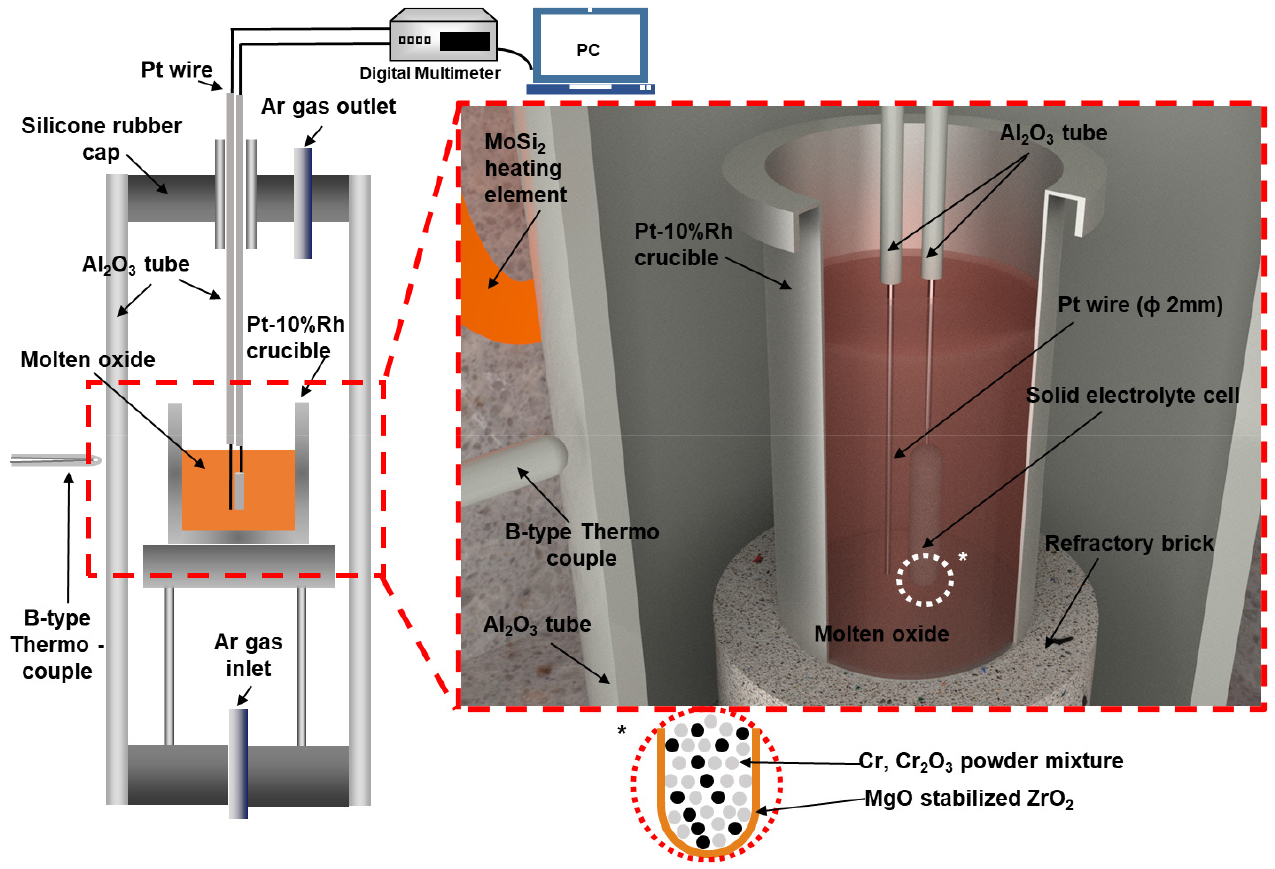
-
Measurement of Oxygen Potential in Molten Oxides and Its Application to Viscosity Studies
용융 산화물의 산소 포텐셜 측정과 점성 연구에의 활용
-
Youngjae Kim, Dongju Shin
김영재, 신동주
- In high-temperature pyrometallurgical and glass production processes, the oxygen potential of molten oxides is critical for controlling the quality and properties of …
고온 건식 제련 및 유리 생산 공정에서 용융 산화물의 산소 포텐셜은 금속 및 유리의 품질과 물성을 제어하는 데 매우 중요하다. 특히 전이 …
- In high-temperature pyrometallurgical and glass production processes, the oxygen potential of molten oxides is critical for controlling the quality and properties of metal and glass. Especially in molten oxides containing transition metals, oxygen potential determines the distribution of their oxidation states, which significantly impacts key material properties such as viscosity, electrical characteristics, and optical absorption of the melt. This study utilized oxygen sensor to measure the oxygen potential of molten oxides in a TiO2 slag process, analyzing the changes in oxygen potential with the addition of B2O3 flux. Based on the oxygen potential data obtained through electromotive force (EMF) measurements, the activities of transition metal (Fe, Ti) oxides were thermodynamically calculated. Experimental results confirmed that the oxygen potential of the molten oxide changed with B2O3 addition, consequently affecting the activities of FeO, TiO2, and Ti2O3. Furthermore, the correlation between the activity changes of individual oxides due to oxygen potential variations and the structural changes in the molten oxide system was investigated. This confirms the critical importance of oxygen potential measurement and the analysis of transition metal oxidation activities for understanding the thermophysical properties of molten oxide systems containing transition metals.
- COLLAPSE
고온 건식 제련 및 유리 생산 공정에서 용융 산화물의 산소 포텐셜은 금속 및 유리의 품질과 물성을 제어하는 데 매우 중요하다. 특히 전이 금속을 포함하는 용융 산화물에서는 산소 포텐셜이 이들 원소의 산화 상태를 결정하며, 이는 용융물의 점도, 전기적 특성, 광학적 흡수 등 핵심 물성에 큰 영향을 미친다. 본 연구에서는 TiO2 슬래그 공정에서 산소 센서 기술을 활용하여 용융 산화물의 산소 포텐셜을 측정하고, B2O3 플럭스 첨가에 따른 산소 포텐셜 변화를 분석하였다. 기전력(EMF) 측정을 통해 얻은 산소 포텐셜 데이터를 기반으로 전이 금속(Fe, Ti) 산화물의 활동도를 열역학적으로 계산하였다. 실험 결과, B2O3 첨가에 따라 용융 산화물의 산소 포텐셜이 변화하며, 이로 인해 FeO, TiO2, Ti2O3 등의 활동도가 영향을 받는 것을 확인하였다. 또한 산소 포텐셜 변화에 따른 각 산화물들의 활동도 변화와 용융 산화물계의 구조 변화와의 상관 관계를 고찰하였다. 이를 통하여 전이 금속을 포함하는 용융 산화물계의 열물성을 이해하는 데 있어 산소 포텐셜 측정과 전이 금속의 활동도 분석이 매우 중요함을 확인하였다.
-
Measurement of Oxygen Potential in Molten Oxides and Its Application to Viscosity Studies



 Resources Recycling
Resources Recycling
